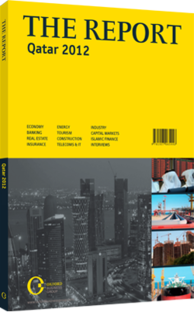Industries Qatar: Industry
THE COMPANY: A regional and local heavyweight, Industries Qatar (IQCD on the Qatar Exchange) is the second-largest listed company on the local bourse. The state of Qatar, through Qatar Petroleum (QP), owns a 51% stake in the company. QP recently lowered its ownership from 70% by transferring a portion of its shares to Qatar’s General Retirement and Social Insurance Authority. Currently, foreign ownership in the company is limited to 25% of the free float. IQCD operates through several subsidiaries and joint ventures, including the Qatar Steel Company (QSC), the Qatar Petrochemical Company (QAPCO), the Qatar Fertiliser Company (QAFCO) and the Qatar Fuel Additives Company (QAFAC). QSC is a fully owned subsidiary that manufactures steel billets and reinforcing bars. It was the first integrated steel producer in the GCC and is Qatar’s sole steel producer with an installed capacity of 1.8m tonnes per year (mtpa) of steel bars as of 2011. Steel accounted for 37% and 22% of revenue and net profit, respectively, in the first half of 2012. QAPCO, which is 80% owned by IQCD, produces petrochemicals, including ethylene, low-density polyethylene (LDPE) and linear low-density PE. The company is undergoing an expansion of its LDPE capacity, which is set to grow from 0.4 mtpa to 0.7 mtpa during the second half of 2012. Petrochemicals made up 33% and 40% of total revenue and net profit, respectively, during the first six months of 2012. QAFCO, which is 75% owned by IQCD, is the world’s largest single-site producer of ammonia and urea with gross production capacities of 2.3 mtpa and 3.1 mtpa, respectively. QAFCO launched its QAFCO-5 and QAFCO-6 projects in 2012, which are expected to increase gross production capacity of ammonia and urea by 1.5 mtpa and 2.7 mtpa, respectively. Meanwhile, QAFAC, in which IQCD holds a 50% stake, produces methyl-tertiary-butyl-ether and methanol with installed capacities of 0.6 mtpa and 1.0 mtpa, respectively. After a record breaking 2011, which witnessed a 34.2% growth in total revenue to QR16.5bn ($4.5bn), IQCD posted its highest ever half-year revenue during the first six months of 2012, with revenue increasing 11.1% on a yearly basis to QR9.1bn ($2.5bn). These results were propelled by volume-driven growth in the fertiliser and steel segments. However, petrochemicals volumes were affected by planned and unplanned shutdowns in the fuel additives joint venture in early 2012.
Prices for key product lines, with the exception of urea, remained soft on a year-on-year (y-o-y) basis. Fertiliser revenue grew by 27.7% y-o-y and revenue from the steel segment increased by 16.7%, while petrochemicals declined by 5% y-o-y. First half 2012 gross profit increased by a modest 2.0% y-o-y, given the weakness in key product prices. Net profit fell by 3.2% to QR4bn ($1.1bn), given a rise in direct costs, higher depreciation expenses related to the capitalisation of additional assets, higher finance charges, losses from steel associates and additional take or pay charges.
DEVELOPMENT STRATEGY: Operating in a commodity market, IQCD’s key competitive advantage versus global players lies in its ability to procure natural gas feedstock at a subsidised price from the government, at $2.09 per million British thermal units (mmbtu) in 2011. Going forward in 2012, management expects the gas price to decline to $1.92 per mmbtu; overall, the company anticipates gas input prices to grow at a modest compound annual growth rate (CAGR) of 0.8% per year to reach $2.18 per mmbtu in 2016.
According to IQCD’s recently released five-year business plan, the company expects to reach QR23.7bn ($6.5bn) in revenue by 2016 primarily benefitting from an increased contribution from its fertiliser and LDPE-3 projects starting in 2012 and 2013. This translates into a CAGR of around 7.5% between 2011 and 2016. Net profit is projected to grow at a similar 7.4% clip to reach QR11.3bn ($3.1bn) by 2016. Looking ahead, we retain our bullish view on IQCD given the company’s significant capacity expansion in 2012-13, strong cash flow generation, solid dividend yield and potential for expansion. Macro risks exist but we remain optimistic.
You have reached the limit of premium articles you can view for free.
Choose from the options below to purchase print or digital editions of our Reports. You can also purchase a website subscription giving you unlimited access to all of our Reports online for 12 months.
If you have already purchased this Report or have a website subscription, please login to continue.

